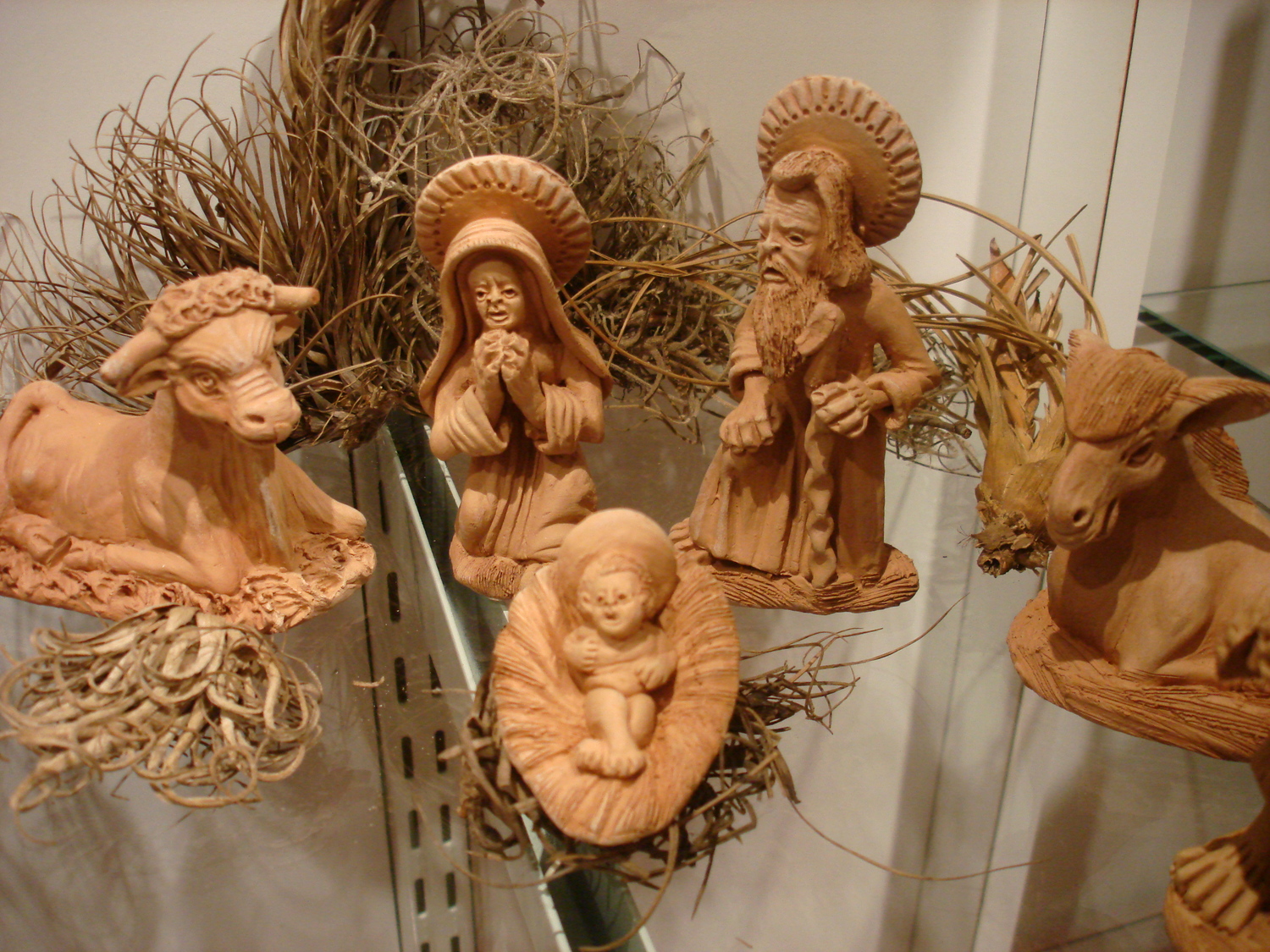
St. Francis turned the traditional telling of the nativity story upside down in the 13th century. Instead of seeing the Holy Christ Child through the formal eyes of the Church, he humbly re-enacted Jesus’s birth through the cultural eyes of villagers living in Greccio, Italy, introducing them to the Babe of Bethlehem. The living nativity was born, and people began to portray the birth of Christ in a way they could relate to and understand.
Fast forward eight centuries. High in the Andes Mountains beyond Lima, Peru, lives a tribal group of 40 or so families. Each family has the hereditary disease of acromegaly. The rare disorder causes their bodies to have greatly enlarged hands and feet and large and sunken eye sockets. Unsurprisingly, the nativity sets made in this village take on the visual identity of the people. As you can see in the Nativity set featured here, even the Christ Child shows signs of acromegaly. For me, no other nativity scene in our collection so poignantly portrays the incarnation.
The Peru villagers travel miles down the mountain to trade their goods and crafts for food, money, and medicine. There, they mingle with people without acromegaly, so they know there are other people who do not look like them. Yet, their nativity scenes reflect their own people; and I believe, through the eyes of their culture, allow them to experience firsthand a living nativity, the incarnation of Christ.
Kathryn Kimball is the Museum Collections Manager of The Upper Room’s Christian Art Museum. During the months of November–January, the museum displays 160 nativity scenes, reflecting more than 40 cultures. Admission is free, and the museum hours are Monday–Friday, 8:00-4:30. 1908 Grand Ave. Nashville, TN. http://chapel.upperroom.org/. 615-340-7207.

We invite you to join us as we journey through the season with The Upper Room Advent Calendar.